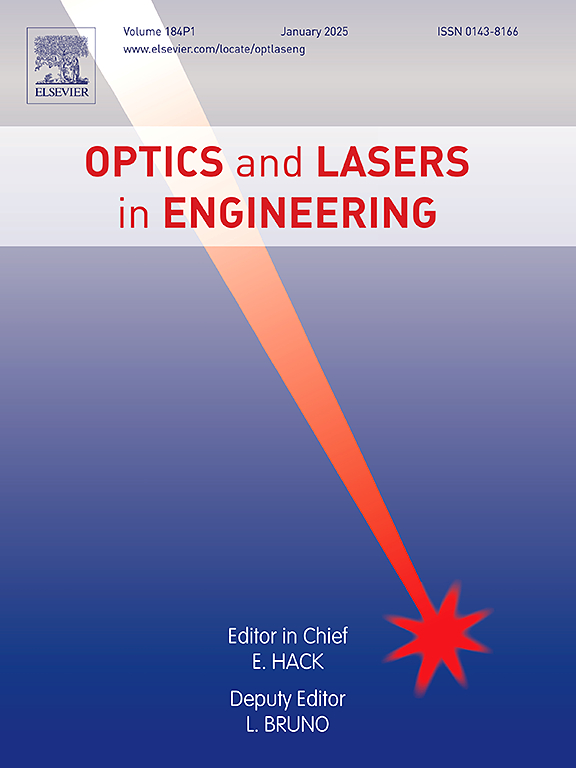High modulation depth, ultra-compact, and tunable electro-optical modulator based on dielectric-loaded graphene-plasmonic waveguides
IF 3.5
2区 工程技术
Q2 OPTICS
引用次数: 0
Abstract
In this study, we propose a novel ultra-compact, tunable electro-optical (EO) modulator based on dielectric-loaded graphene-plasmonic waveguides (DLGPW). By leveraging the exceptional optical and electrical properties of graphene, the modulator achieves high modulation depth (MD) and extinction ratio (ER) for operation in the mid-infrared (MIR) region. The device utilizes surface plasmon polaritons (SPPs) excited at the graphene-dielectric interface, enabling strong light confinement and low propagation losses. By adjusting the chemical potential of graphene through an external voltage, the refractive index of graphene is tuned, allowing for precise control over the resonant wavelength and modulation characteristics. Through detailed numerical simulations using the three-dimensional finite-difference time-domain (3D-FDTD) method, we demonstrate that the proposed modulator achieves an MD of 98.69%, an ER of 18.835 dB, and IL of 2.5 dB, with a modulation bandwidth of 1.13 THz. The ultra-compact design and compatibility with CMOS technology make the proposed modulator a promising candidate for next-generation photonic systems, particularly in applications requiring high-speed and efficient modulation in MIR spectral ranges.
基于介电负载石墨烯等离子波导的高调制深度、超紧凑、可调谐电光调制器
在这项研究中,我们提出了一种基于介电负载石墨烯等离子体波导(DLGPW)的新型超紧凑可调谐电光(EO)调制器。通过利用石墨烯优异的光学和电学特性,该调制器在中红外(MIR)区域实现了高调制深度(MD)和消光比(ER)。该器件利用在石墨烯-介电界面激发的表面等离子激元(SPPs),实现强光约束和低传播损耗。通过外部电压调节石墨烯的化学势,可以调节石墨烯的折射率,从而精确控制谐振波长和调制特性。通过三维时域有限差分(3D-FDTD)方法的详细数值模拟,我们证明了该调制器的MD为98.69%,ER为18.835 dB, IL为2.5 dB,调制带宽为1.13 THz。超紧凑的设计和与CMOS技术的兼容性使所提出的调制器成为下一代光子系统的有希望的候选者,特别是在需要在MIR光谱范围内高速高效调制的应用中。
本文章由计算机程序翻译,如有差异,请以英文原文为准。
求助全文
约1分钟内获得全文
求助全文
来源期刊

Optics and Lasers in Engineering
工程技术-光学
CiteScore
8.90
自引率
8.70%
发文量
384
审稿时长
42 days
期刊介绍:
Optics and Lasers in Engineering aims at providing an international forum for the interchange of information on the development of optical techniques and laser technology in engineering. Emphasis is placed on contributions targeted at the practical use of methods and devices, the development and enhancement of solutions and new theoretical concepts for experimental methods.
Optics and Lasers in Engineering reflects the main areas in which optical methods are being used and developed for an engineering environment. Manuscripts should offer clear evidence of novelty and significance. Papers focusing on parameter optimization or computational issues are not suitable. Similarly, papers focussed on an application rather than the optical method fall outside the journal''s scope. The scope of the journal is defined to include the following:
-Optical Metrology-
Optical Methods for 3D visualization and virtual engineering-
Optical Techniques for Microsystems-
Imaging, Microscopy and Adaptive Optics-
Computational Imaging-
Laser methods in manufacturing-
Integrated optical and photonic sensors-
Optics and Photonics in Life Science-
Hyperspectral and spectroscopic methods-
Infrared and Terahertz techniques
 求助内容:
求助内容: 应助结果提醒方式:
应助结果提醒方式:


